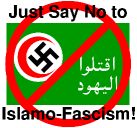PRIEST'S WORK REVEALS UKRAINIAN HOLOCAUST
A Priest Methodically Reveals Ukrainian Jews’ Fate (NYT)
PARIS, Oct. 5 — His subjects were mostly children and teenagers at the time, terrified witnesses to mass slaughter. Some were forced to work at the bottom rung of the Nazi killing machine — as diggers of mass graves, cooks who fed Nazi soldiers and seamstresses who mended clothes stripped from the Jews before execution.
They live today in rural poverty, many without running water or heat, nearing the end of their lives. So Patrick Desbois has been quietly seeking them out, roaming the back roads and forgotten fields of Ukraine, hearing their stories and searching for the unmarked common graves. He knows that they are an unparalleled source to document the murder of the 1.5 million Jews of Ukraine, shot dead and buried throughout the country.
He is neither a historian nor an archaeologist, but a French Roman Catholic priest. And his most powerful tools are his matter-of-fact style — and his clerical collar.
The Nazis killed nearly 1.5 million Jews in Ukraine after their invasion of the Soviet Union in June 1941. But with few exceptions, most notably the 1941 slaughter of nearly 34,000 Jews in the Babi Yar ravine in Kiev, much of that history has gone untold.
Knocking on doors, unannounced, Father Desbois, 52, seeks to unlock the memories of Ukrainian villagers the way he might take confessions one by one in church.
“At first, sometimes, people don’t believe I’m a priest,” said Father Desbois in an interview this week. “I have to use simple words and listen to these horrors — without any judgment. I cannot react to the horrors that pour out. If I react, the stories will stop.”
Over four years, Father Desbois has videotaped more than 700 interviews with witnesses and bystanders and has identified more than 600 common graves of Jews, most of them previously unknown. He also has gathered material evidence of the execution of Jews from 1941 to 1944, the “Holocaust of bullets” as it is called.
Often his subjects ask Father Desbois to stay for a meal and to pray, as if to somehow bless their acts of remembrance. He does not judge those who were assigned to carry out tasks for the Nazis, and Holocaust scholars say that is one reason he is so effective.
“If a Jewish taker-of-testimony comes, what would people think — that this is someone coming to accuse,” said Paul Shapiro, director of the Center for Advanced Holocaust Studies at the United States Holocaust Memorial Museum in Washington. “When a priest comes, people open up. He brings to the subject a kind of legitimacy, a sense that it’s O.K. to talk about the past. There’s absolution through confession.”
Unlike in Poland and Germany, where the Holocaust remains visible through the searing symbols of the extermination camps, the horror in Ukraine was hidden away, first by the Nazis, then by the Soviets.



























No comments:
Post a Comment